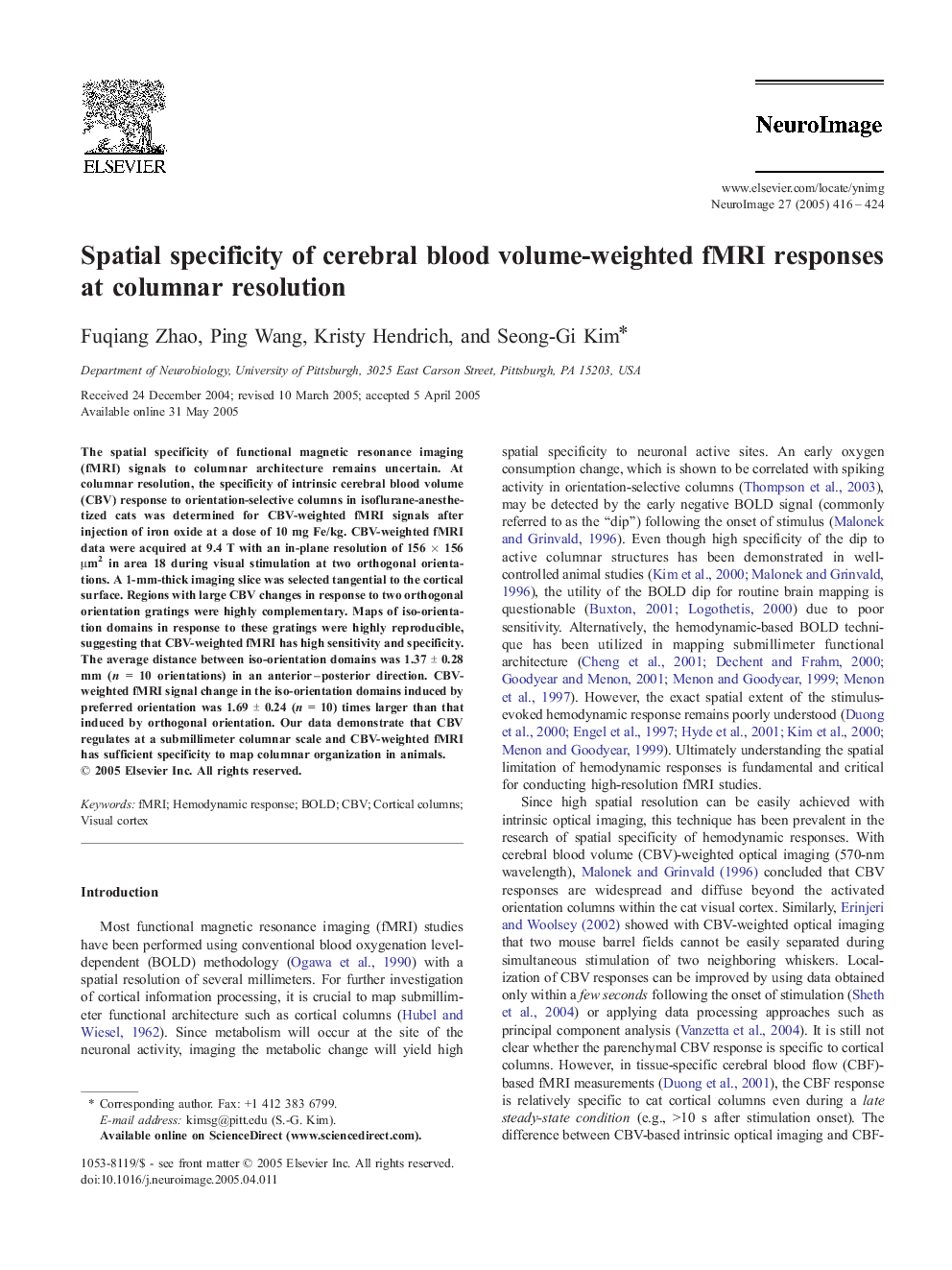| Article ID | Journal | Published Year | Pages | File Type |
|---|---|---|---|---|
| 9197823 | NeuroImage | 2005 | 9 Pages |
Abstract
The spatial specificity of functional magnetic resonance imaging (fMRI) signals to columnar architecture remains uncertain. At columnar resolution, the specificity of intrinsic cerebral blood volume (CBV) response to orientation-selective columns in isoflurane-anesthetized cats was determined for CBV-weighted fMRI signals after injection of iron oxide at a dose of 10 mg Fe/kg. CBV-weighted fMRI data were acquired at 9.4 T with an in-plane resolution of 156 Ã 156 μm2 in area 18 during visual stimulation at two orthogonal orientations. A 1-mm-thick imaging slice was selected tangential to the cortical surface. Regions with large CBV changes in response to two orthogonal orientation gratings were highly complementary. Maps of iso-orientation domains in response to these gratings were highly reproducible, suggesting that CBV-weighted fMRI has high sensitivity and specificity. The average distance between iso-orientation domains was 1.37 ± 0.28 mm (n = 10 orientations) in an anterior-posterior direction. CBV-weighted fMRI signal change in the iso-orientation domains induced by preferred orientation was 1.69 ± 0.24 (n = 10) times larger than that induced by orthogonal orientation. Our data demonstrate that CBV regulates at a submillimeter columnar scale and CBV-weighted fMRI has sufficient specificity to map columnar organization in animals.
Related Topics
Life Sciences
Neuroscience
Cognitive Neuroscience
Authors
Fuqiang Zhao, Ping Wang, Kristy Hendrich, Seong-Gi Kim,
